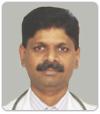Question: Good evening! I have a couple of questions. I was involved in a car accident on September 27, 2013. I was at a complete stop when I looked in my rear view mirror and saw the driver of the car behind me coming at me while looking down - he was not paying attention. The speed limit on the road is 55 (be honest hardly anyone drives 55) most drive 60+. I was in the far right XXXXXXX ended up on the shoulder of the road on the left side of highway. He was driving an Audi, I was driving a Ford Expedition, my car was undriveable and was totaled. Okay now on to the health questions - I have been having pain in my neck, between my shoulder blades and lower back since and it does not seem to be getting any better, in fact worse. I am also experiencing
tingling and weakness in both arms, all the way down to hands (in fact, dropped a bottle of water today). I am getting far more
headaches than ever and as I stated my pain is seeming to increase (slight observation) my blood pressure is usually right around 120/70, since the accident (I am assuming because of pain) - it has been (at three of my drs appts) approx. 137/89. I have had an
MRI and this is what it says (wondering if this could be caused by accident) because I have never had any of these issues prior to accident. "There is straightening with reversal of the normal
cervical lordosis at C4-C6. Mild degenerative signal is visualized at the inferior endplate of c%. Mild anterior osteophytosis is visualized at C4-C5 and C5-C6. Otherwise
vertebral body heights and marrow signal are preserved. There is moderate disc desiccation visualized at C4-C5 and C5-C6. The paraspinal soft tissues are unremarkable. C4-C5 - Mild
disc osteophyte at a left central location causes mild narrowing of the ventral epidural space with discrete central canal narrowing. C5-C6 - Shallow disc osteophyte causes narrowing in the ventral epidural space without discrete central canal narrowing. Please help me understand what is going on - because I do not want to take pain pills forever and as I said earlier - this pain is getting worse. Thank you for your time







